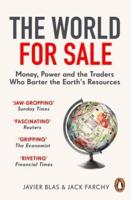Publisher's Synopsis
Today, all developed countries insurance business and sell whatever coverages the companies they work with offer. Independent agents sell more commercial lines insurance than personal lines (auto and home insurance). The reverse is true for captive agents. Managing general agents tend to focus on commercial risks and often have authority from the insurance companies they work for to accept business on their behalf, subject to certain terms and conditions. Large brokers focus on commercial lines.Over the decades, distribution systems have changed. Some insurance companies that started in business using their own sales force switched to independent agents because as companies started to write business in unfamiliar locations, they needed to rely on local people who knew the area.The term "captive" or "exclusive" agent has become associated with companies known today as direct writers. One major difference between captive and independent agents is that the independent agent rather than the insurer legally owns access to policy renewals. Captive insurance agents may be employees of the company or independent contractors.The concept of direct writers developed at the beginning of the 20th century. Generally, they were mutual companies that sold insurance to farmers and others in specific agricultural businesses, such as millers, at a time when a quarter of the nation's population lived on farms. Because they were familiar with the risks, they were able to undercut the competition. Many of the direct writers, which are today among the largest auto and home insurers, began by selling auto insurance directly to farm bureaus in the 1920s. Among the best known are State Farm, Nationwide, American Family and Farmers. Other companies such as the United States Army Insurance Association, now USAA, sold to the military and yet others sold to state automobile clubs.Nowadays, the term "direct writer" may apply to any company using captive or exclusive agents, as well as companies selling directly to consumers through the mail, Internet or through telephone solicitations, although technically the latter are "direct marketing" or "direct response" companies. These direct response companies use salaried employees or company representatives to interact with consumers offsite, whereas agents generally conduct some business with their policyholders face-to-face in their office. GEICO, one of the largest auto insurance companies that today markets directly to consumers, started in 1936 as the Government Employees Insurance Company, selling to government employees and some military personnel. As the number of companies opting to use multiple channels grows, categorizing a company as a direct writer or agency writer is becoming less helpful. ⦁Developed countries life insurance sales method changes









